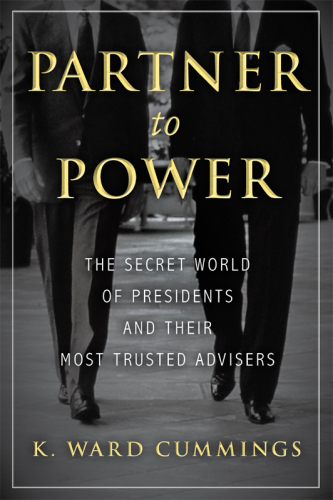
Partner to Power
The Secret World of Presidents and Their Most Trusted Advisers
کتاب های مرتبط
- اطلاعات
- نقد و بررسی
- دیدگاه کاربران
نقد و بررسی

December 4, 2017
A former senior advisor to members of Congress, Cummings debuts with an uneven look at 11 close advisers to nine presidents, from George Washington to George W. Bush. Cummings uncovers much fascinating presidential history, including how Alexander Hamilton helped buoy Washington’s administration by shepherding through Congress a controversial treaty with Britain and the jockeying for power between Sherman Adams, Eisenhower’s chief of staff, and then-secretary-of-state John Foster Dulles. Cummings writes clearly and often colorfully but sometimes overstates his case, as in maintaining that Washington and Hamilton had “a seamless partnership so close it was as if they knew each other’s thoughts.” Also, some of his chapters are far too brief; the one on F.D.R. and Louis Howe, for example, inexplicably focuses almost entirely on their relationship before F.D.R. was elected president and Howe was appointed secretary to the president. While these flaws are significant, this is still an original, insightful exploration of how the presidency has evolved and of how presidents have functioned. Agent: Andrew Stuart, the Stuart Agency.

December 15, 2017
Looking at the "extraordinary relationships" between a handful of presidents and their most trusted advisers.Presidents have Cabinets, secretaries, and aides, but this is often not enough counsel. Most have depended heavily on a single individual who may or may not occupy an official position within the government. In his first book, Cummings, a former senior adviser to Congress, delivers breezy dual biographies of presidents and these critical figures. " 'Right-hand men' are chosen because their strengths and temperaments serve the purposes of the president," writes the author. "Though most of them choose to wield their influence out of the spotlight, even from the shadows they impact our lives in deep and lasting ways." Although Cummings mentions a dozen others at length, nine chapters emphasize perhaps the most significant. Two historical icons--Alexander Hamilton under Washington and William Seward under Lincoln--were Cabinet members. Two obscure figures (although not at the time)--Edward House under Woodrow Wilson and Louis Howe under Franklin Roosevelt--occupied shadowy, semi-official positions. More recent presidents have depended heavily on a chief of staff, a position heralded by Clark Clifford with Harry Truman and solidified by chiefs advising Dwight Eisenhower and Ronald Reagan. There were also a first lady, Hillary Clinton, and a vice president: Dick Cheney under George W. Bush. Not shy with opinions, Cummings disapproves of Hillary Clinton's performance but gives Cheney good marks and concludes with an energetic promotion of the vice presidency as the most effective office for a president's right-hand man.The author mostly gathers material from other historians, and his tendency to explain a president's choice as a consequence of parallel childhood trauma may remind readers of the Freudian psychobiographies that flourished in the mid-20th century. On the plus side, he writes well and delivers entertaining accounts that illuminate an important feature of American presidential politics.
COPYRIGHT(2017) Kirkus Reviews, ALL RIGHTS RESERVED.

























دیدگاه کاربران